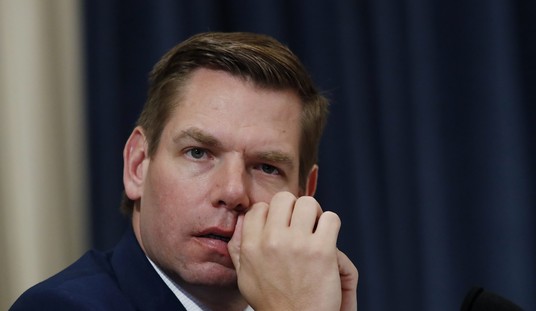Despite President Biden's assurances to the contrary, inflationary pressure is apparently here to stay as his administration looks toward the start of his second year in office and may hope for some relief from the negative "Democrats in disarray" narrative swirling around the White House.
However badly Biden may want the economy to improve, Americans surely wish so more fervently. With the most expensive Thanksgiving and Christmas in memory in the rear-view mirror, there are unfortunately more price hikes to come as manufacturers and producers pass the costs of lasting inflation on to consumers. As The Wall Street Journal announced, "Everything from coffee to mustard is getting more expensive next year."
In Biden’s America next year, everything from coffee to mustard is getting more expensive. https://t.co/bXDr85TXoN
— Senator Bill Hagerty (@SenatorHagerty) December 27, 2021
Just how much more expensive can things get? Well, as the WSJ reported, "Food prices are estimated to rise 5% in the first half of 2022, according to research firm IRI, though the level of increases will vary by grocers and regions."
Another five percent increase on food prices comes after the government's metrics for inflation — the Consumer and Producer Price Indexes — have hit year-over-year highs not seen in nearly forty years. And a new year is not going to suddenly bring relief as long as President Biden's economic policy continues on its established trajectory. Due to spikes in the Producer Price Index — the cost of goods used by those upstream of consumers — the Consumer Price Index is set to continue spiking as well.
That means companies like Mondelez International Inc., — the group behind brands including Oreo, Chips Ahoy!, Ritz, Philadelphia Cream Cheese, and Sour Patch Kids — will be raising prices "by 6% to 7% starting in January," says WSJ. Kraft Heinz Co. is also raising prices on its products, some by as much as 20 percent, according to a memo the WSJ reviewed.
Recommended
Unsurprisingly, another Biden crisis is compounding inflation and contributing to rising prices. Issues with the supply chain — which revealed that Transportation Secretary Pete Buttigieg was out on leave as the crisis spun out of control and U.S. ports became floating parking lots for cargo ships — are set to increase the cost to get goods to market, a cost that is ultimately passed on to consumers.
The WSJ explains:
Coming price increases in 2022 range from as low as 2% to 20%, hitting all sections of the grocery store including produce and packaged goods. Potatoes, celery and other heavier vegetables will have higher price tags next year in part because of higher freight costs, supermarket executives said. Wine, beer and liquor are also likely to get more expensive, they said, especially those that are imported.
Pantry staples such as mayonnaise and frozen meals are expected to be more pricey partly because of higher labor, logistics and packaging costs, some executives said.
President Biden needs a plan, and needs to execute said plan, to get inflation under control. But like most of his crises, he's been in denial there's any problem at all. First calling inflation "transitory," a narrative which wore thin as months of consecutive record high inflation were recorded. Then he turned to bragging about wage growth, something that has happened, but he left out the fact that inflation has gutted wage increases. So much so, even, that in recent months, the impact of inflation means real wages have actually decreased by not-insignificant amounts. So yes, people may be making more per hour. But the rising cost of groceries, gas, etc. mean that Americans are able to buy less with what they earn.
Biden's recent decision to throw in the towel on the Wuhan coronavirus and say that "there is no federal solution" to the pandemic after promising to "shut down the virus" during his basement-based campaign suggests that he's unlikely to take serious action to address inflation, or any of his other crises.


